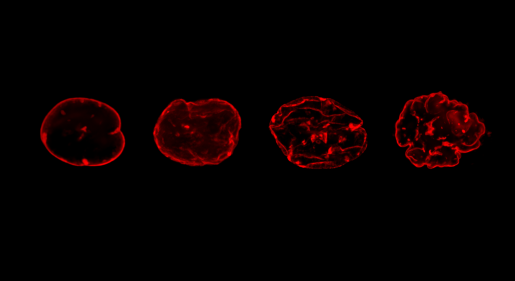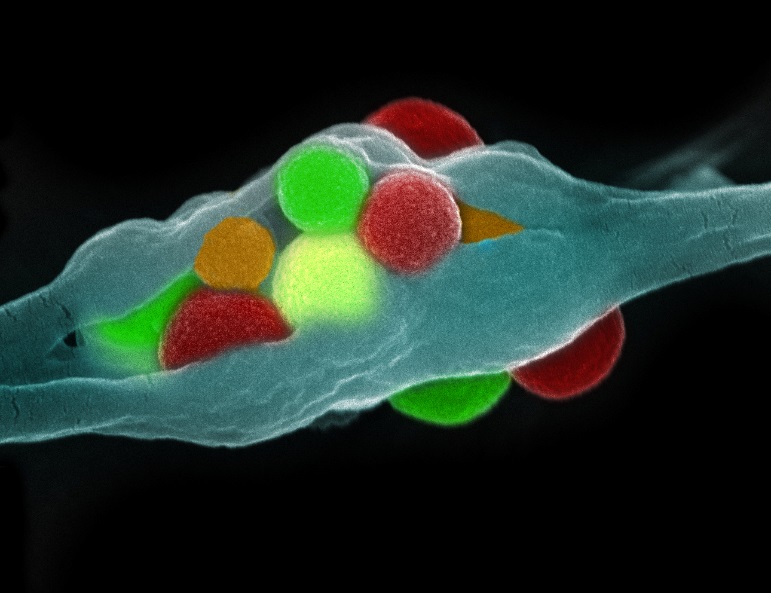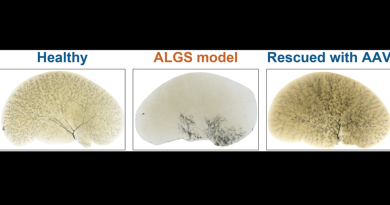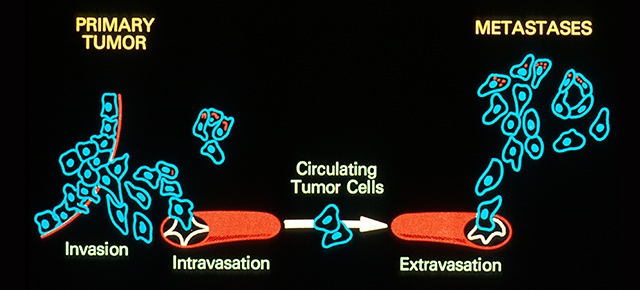Image of the Month: Aging signs
Although we are all familiar with aging and that it affects the body at all levels, many questions remain about how it happens. At Baylor College of Medicine the laboratory of Dr. Andre Catic studies the responses of cells to changes in the environment and fate in the context of metabolism, stem cell and cancer biology and aging. The goal of these studies, in aging for instance, is to be able to alter its path by modifying distinct genetic programs involved in the process.

The image this month is a time-lapse microscopy showing age-associated changes that occur in the nuclear envelope of a mouse fibroblast. The researchers visualized lamin A (red), a protein that is part of the support structure of the nucleus.
“Mutations of Lamin A can cause a rare premature aging syndrome, Hutchinson-Gilford Progeria Syndrome (HGPS), in which lamin A cannot be processed and accumulates in the nuclear envelope,” Catic said.
In this experiment, the researchers, including former students Christine Rodriguez and Melanie Sweeney, overexpressed normal lamin A and observed structural changes to the nucleus that were reminiscent of HGPS, such as lobulation and blebbing, irregular bulging of the membrane. Significantly, these results suggest that higher expression of normal lamin A can cause similar structural damage to the nucleus as that observed in cells carrying the rare HGPS mutations.
Learn more about the research conducted in the Catic lab website.

Dr. Andre Catic is assistant professor and CPRIT Scholar in Cancer Research since 2014 at Baylor’s Huffington Center on Aging.
Follow From the Labs on X @BCMFromtheLabs and Instagram!



